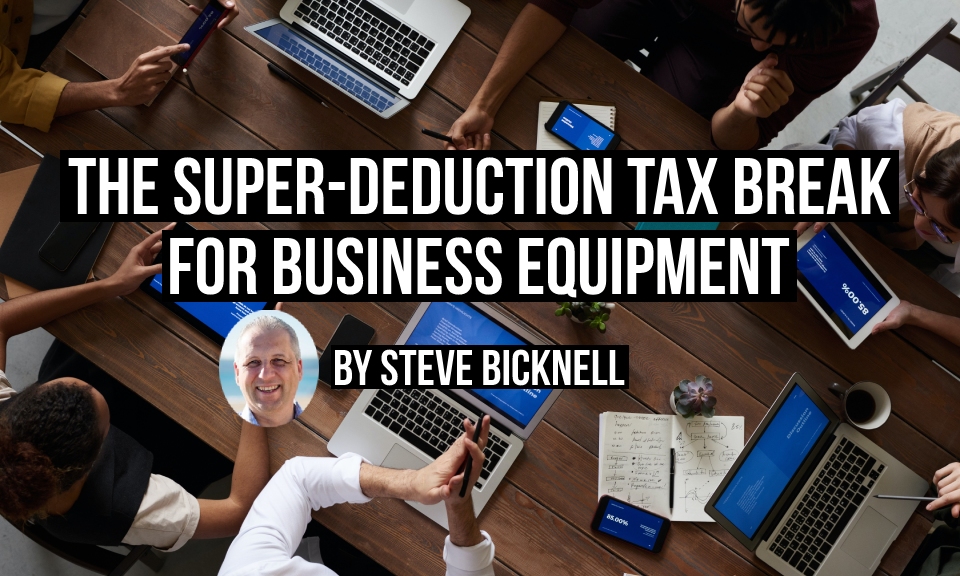As part of the 2021 budget, the Government announced the super-deduction tax break. The super-deduction allows businesses to claim 130% of expenditure for new business equipment against their taxable profits.

The super-deduction begins from April 2021 and will provide up to 25p off your tax bill for every pound spent on eligible purchases of plant and machinery. This article explains how it works, which purchases are eligible, and how to calculate your savings.
How does the super-deduction work?
Any qualifying plant and machinery investments made between April 1st 2021 and March 31st 2023 will be eligible for 130% first-year relief. This means that the deductions will be made during the year the equipment was first purchased.
130% of eligible investments can be deducted from your corporation tax bill, which will save you significantly more than the previous method.
Which equipment is eligible for the super-deduction?
Most tangible assets that are purchased for business use can be claimed under capital allowances. Only purchases made within the period of April 1st 2021 to March 31st 2023 will apply. A few examples of eligible assets include:
- Computers, printers, servers, etc.
- Any office equipment, such as desks, chairs, and whiteboards
- Solar panels
- Electric car charging points
- Tractors, forklifts, trucks, and vans
- Tools, ladders, crane, etc.
- Compressors
A more extensive list of eligible plant and machinery can be found on the UK Government website.
Which equipment is not covered by the super-deduction?
It is important to note that only purchases of new equipment are eligible - used equipment is not. A few notable exclusions are:
- Company cars
- Buildings and structures
- Equipment that landlords install in rental units (e.g. air conditioning)
- Any equipment that you offer for rent
Which companies can use the super-deduction?
The super-deduction is not only for large UK corporations, SME’s can also take advantage of the tax savings.
The super-deduction is available to any business that pays corporation tax and has eligible purchases. Therefore, sole traders and partnerships are excluded, but any other registered corporation can use the super-deduction.
Super-deduction example
Below, we have provided an example of how to calculate the super-deduction.
A business spent £10,000 on qualifying expenditure. With the super-deduction, the business can deduct 130% of the initial investment (£10,000 x 130% = £13,000) from its taxable profits. Deducting £13,000 will save the business up to 19% of that amount (£2,470) on its tax bill.
Qualifying expenditure: £10,000
130% super-deduction: £13,000
19% tax savings: £2,470
Compared to the previous system of using The Anual Investment Allowance (AIA) and Writing Down Allowances (WDA), the super-deduction will provide a much larger tax break.
What happens if you sell an asset?
Businesses will need to be careful if they use the super-deduction and then sell the asset a few years later. They will need to pay the extra tax perk back to HMRC. Depending on the business, the corporation tax would have increased by that time, so it would not be an ideal scenario.
Why was the super-deduction introduced?
Due to the ongoing pandemic, the level of business investments has fallen significantly. The UK Government believe that providing a more generous tax break will give businesses a strong incentive to make additional purchases and to bring planned future investments forward.
The government also announced that the rate of corporation tax, paid on company profits, is to rise to 25% from 19%, starting in 2023. The super-deduction will soften the blow for the companies affected by the change.
Overall, these measures will help businesses and promote economic growth.
